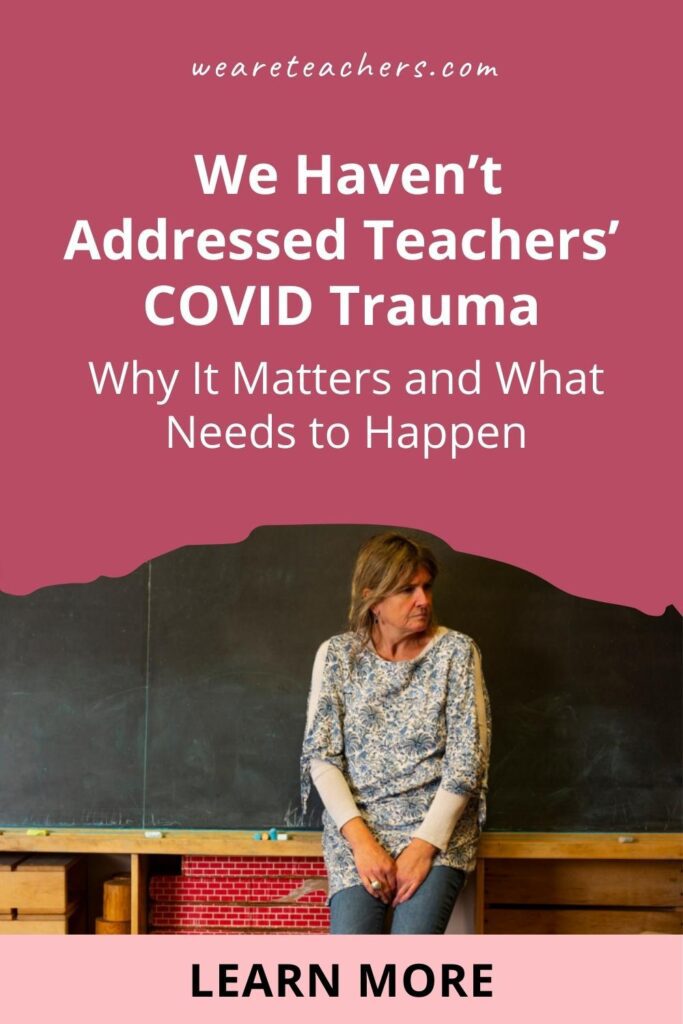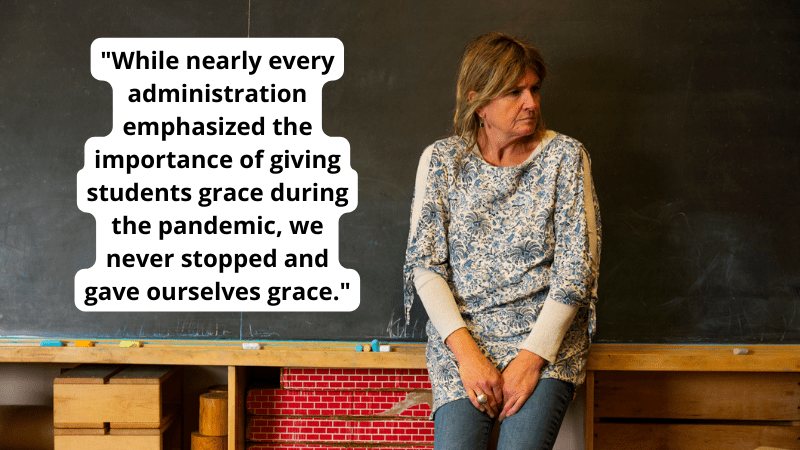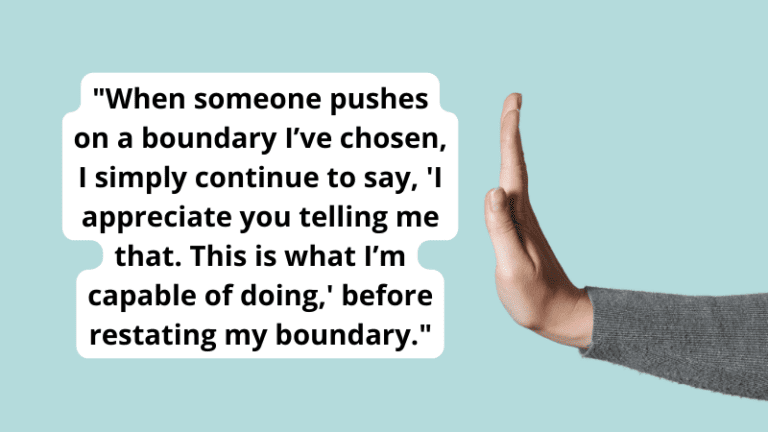On March 13, 2020, I did what many of us were doing: obsessively checking my phone for new updates about COVID-19. My high school students were aware of what was happening, and the atmosphere in my classroom crackled with nerves all day. Finally, toward the end of the period, a friend texted me that all Rhode Island schools were closing. With less than two hours in the school day, we handed out Chromebooks, saying cheerfully, “See you in two weeks!” I didn’t want them to worry any more than they already had been. I certainly wasn’t thinking about how in two years’ time, I’d be writing about teachers’ COVID trauma.
Two weeks turned into two months, which turned into “See you in September.” In Rhode Island, April vacation was moved up a month early to give us time to plan and strategize for the rest of the year. (And let’s not gloss over the fact that teachers were once again called upon to use their vacation time to work.)
But again, I didn’t want my students to feel worried for that first day of Zoom school. I wanted it to feel as normal as possible. So while I tried to figure out just which Greek god I had to pray to in order to get a slot for a grocery delivery, I spent time learning Zoom, transferring my literature circles into an online format, and telling my son that everything would be OK. And I’m not unique in that: Throughout the country, we all scrambled to figure out how to teach in the “new normal,” all while facing the uncertainty and fear of COVID.
The 2020–2021 School Year
During the 2020–2021 school year, teaching looked different worldwide. Some school districts had staff vaccination mandates, some were fully online, some had a hybrid model, some students had no Wi-Fi at home, and some districts couldn’t supply a laptop to each student. Schools may have looked very different, but one thing was the same throughout the country: After months of an unprecedented global pandemic, through obstacles none of us could have imagined, teachers still found a way.
And what did those obstacles look like? We’d lose every third word due to technology freezing. Limited meeting time with students. Toggling between Zoom students and in-person students. Some schools completely lost touch with a number of their students. Thinking this was the hardest it would get, we all hoped that the next year would bring about some much-needed normalcy.
2021–2022
Then, the toughest year ever hit.
We rushed to make things “normal” for students. Face mask requirements varied by location, but most schools were back to in-person education. Sports, field trips, school dances, and normal cafeteria practices returned in many places. High schools prepped for the PSAT and SAT once again.
As educators, we continued to put our students’ needs first. Throughout the pandemic, we rushed to get them supplies and quell their fears. We used our own time to completely reinvent what school looked like. Then, when schools reopened, we rushed back in to care for students who dealt with the struggles of the pandemic with varying degrees of success. We dove into curriculum. We checked on their feelings. But at the end of the day, what did we do for ourselves?
Here’s just a handful of additional stressors teachers carried this past year:
- COVID fatigue
- Compassion fatigue
- The continued stress of how to enforce masking and social distancing with rooms full of students
- PPE shortages
- Ever-changing CDC quarantine guidelines
- Expectations for teachers to continue teaching on COVID leave
- Teachers who couldn’t get COVID leave
- Teachers who got COVID leave, only to then discover it was unpaid
- Substitute teacher shortages (and eventually, teacher shortages)
- Formula shortages and daycare closures for new parents
- Parent complaints about:
- Mask mandates
- Book bans
- Critical race theory (not that it’s taught in K–12, but I digress)
- Uvalde
- The “COVID learning gap”
While nearly every administration emphasized the importance of giving students grace during the pandemic, we never stopped and gave ourselves grace. How could we with the constant barrage of keyboard warriors calling us lazy, the trauma of lockdown drills, or the 27 school shootings during this year alone? Pre-pandemic, it was widely accepted that teachers make around 1,500 decisions a day. With the added expectations, guidelines, protocols, and challenges, who knows what the number was last year?
How Do We Address This?
Here’s where I’m going to reach into my teacher tool kit and offer the same thing I offer my students: honesty. And honestly, I don’t know that there is one single answer.
I do know this: Teachers’ COVID trauma is real. Addressing it cannot be yet another thing put on teachers. “Self-care” on our own time and on our own dime is just another way of putting the onus on the educators who made any semblance of normalcy possible over the last two years.
We stepped up for society, and it’s time they step up for us. Give us time, both in school to plan, and out of school to rest and find our footing. Fund our supply lists so we’re not begging online for them. Find a way to offer us mental health stipends so we can attend therapy, since a large percentage of quality therapists don’t accept insurance. Offering “self-care” resources without providing the time or money for teachers to take advantage of them is irresponsible.
If you’re a teacher suffering from trauma, please reach out. The American Federation of Teachers has trauma counseling available for their members, and the National Education Association has trauma resources for their members. If you or someone you know is in immediate distress or is considering self-harm, call the National Suicide Prevention Lifeline toll-free at 988 (new as of 2022) or 800-273-TALK (8255). Alternatively, you can use their chat system or text line (text HELLO to 741741).
What are your thoughts on teachers’ COVID trauma? Let us know in the comments.
For more articles like this, be sure to subscribe to our newsletters.


